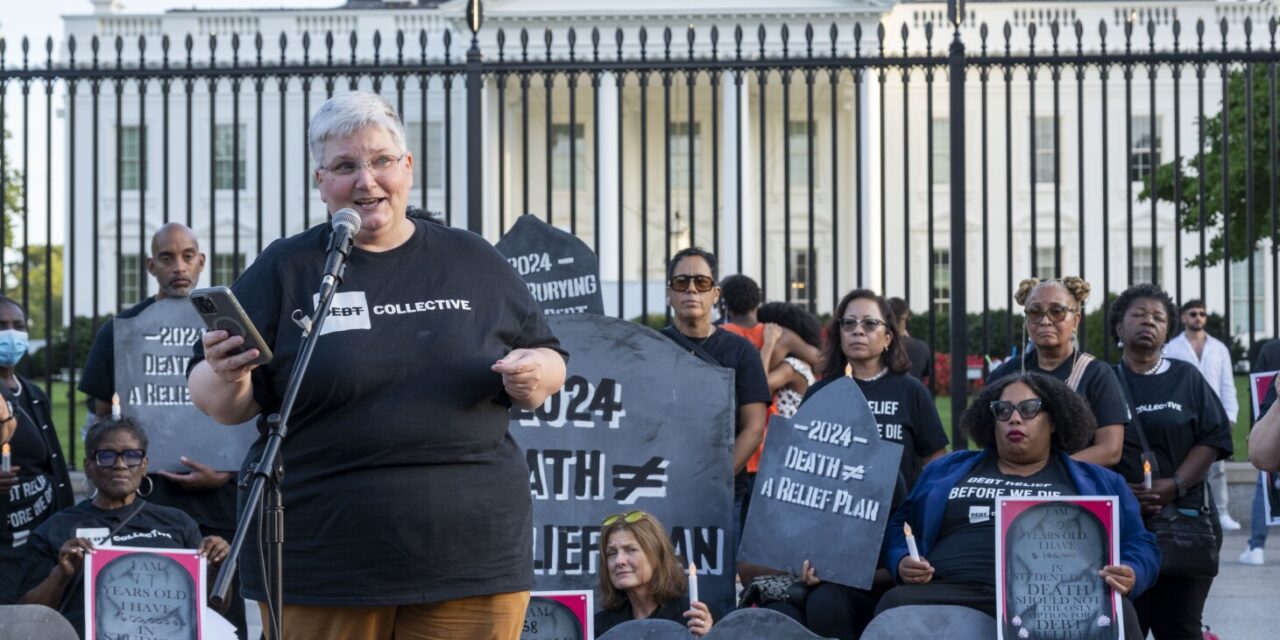
As we fall into the rhythm of a new school year, here is a cold fact that has emerged late in the lives of people who took out student loans when they were younger adults: An estimated 3.5 million people age 60 and above still hold more than $125 billion in student loan debt.
Far too many of them, after a lifetime spent trying to pay off those loans, find themselves unable to continue — only to learn that the financial pain does not go away.
To bring that home, here in Illinois there are just over 97,000 older adults with student loans totaling $4.66 billion, an average of almost $48,000.
The search for a solution to the student loan problem facing younger people has attracted a lot of attention over the past couple of years. But rarely do we visualize the face of a 75-year-old, working two jobs, struggling to make ends meet and overwhelmed by student loan debt. In reality, though, this issue has a lens of aging to it, one that should not be overlooked.
It might be hard to believe, but most of that $125 billion are loans the now-older adults took out to finance their own education dreams when they were younger. Some of it may have accumulated in mid-career as middle-aged people went back to school. Other debt can arrive when parents co-sign student loans for their children, or grandparents take on debt for their grandchildren.
Most older borrowers dutifully try to repay their student loans — doing what they feel necessary to pay their debts — only to find themselves trapped in a cycle of financial instability. In many cases, the balance due is more than the original amount of the loan.
Compounding the issue further, the picture of older borrowers is also one of racial and gender disparity. Black Americans and women carry debt from higher education as they approach retirement age at disproportionate rates.
Safeguarding Social Security, canceling very old loans
These segments of the older adult population were more likely to have been targeted by low-value schools that created unaffordable debt, have had less generational wealth to pull from, or have faced discrimination in the labor market — or all of the above. Over the years, these become significant barriers to repaying loans and achieving financial stability in later life.
There are efforts underway to address the student loan burden on older adults at a systemic level. The National Consumer Law Center and New America Foundation, for example, are working with other advocates to advance reforms that would ease the burden experienced by older borrowers. Here are two examples:
First, these advocates have proposed formalized safeguards that would protect against the seizure of Social Security Benefits for older adults in default of their federal loans.
Without these protections, older borrowers who rely on Social Security to meet basic needs risk having their benefits garnished, leaving as little as $750 per month to live on. According to the Elder Index, a powerful tool that quantifies the cost of growing older in America, we know this figure is woefully insufficient.
Adding to the challenge is the fact that older adults with student loan debt are at risk of seeing any income tax refunds coming their way grabbed and sent to the lenders.
Second, federal policymakers, including those at the Department of Education, should listen to the calls of advocates representing people of all ages, to cancel remaining balances on very old student loans. This move alone could bring relief to 2.3 million older adults with student loan debt and help them become more financially stable.
All of us want economic security as we age. Reducing debt is a critical piece of achieving that vision. Student loan debt, held by millions of older neighbors, family members and friends, strains our ability to live well and securely in later life. Let’s raise awareness of this “aging issue” and support policy reforms that can help older people achieve the security that higher education promises.
Mary O’Donnell is CEO of RRF Foundation for Aging, which is based in Chicago.
The views and opinions expressed by contributors are their own and do not necessarily reflect those of the Chicago Sun-Times or any of its affiliates.
The Sun-Times welcomes letters to the editor and op-eds. See our guidelines.
Get Opinions content delivered to your inbox.




